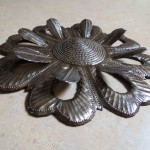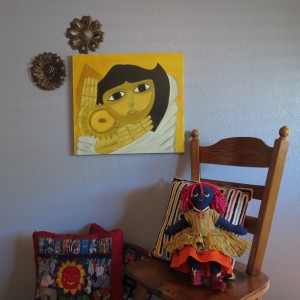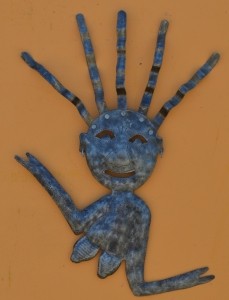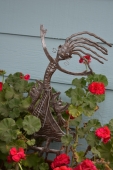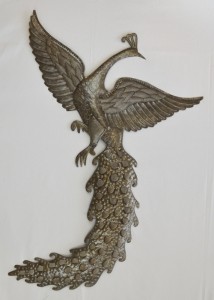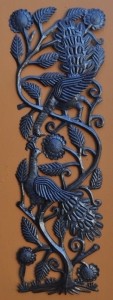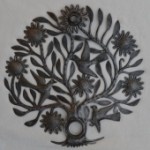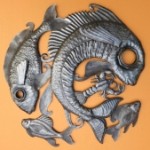Bend It???
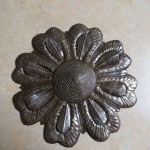 Whenever I sell a Haitian metal sculpture, whether at a show or a street fair or holiday bazaar, I am always pleased when our customers walk away happy and confident with their purchase. But sometimes I have to chuckle at the process. When something is brand new and shiny and wonderful, the ready instinct is to be careful with it. And it’s a good instinct to follow, usually. On the continuum of action between cautious and bold there are times when one should be exercised over the other. Sometimes being cautious is the right choice. And sometimes you have to be bold and bend your sculpture.
Whenever I sell a Haitian metal sculpture, whether at a show or a street fair or holiday bazaar, I am always pleased when our customers walk away happy and confident with their purchase. But sometimes I have to chuckle at the process. When something is brand new and shiny and wonderful, the ready instinct is to be careful with it. And it’s a good instinct to follow, usually. On the continuum of action between cautious and bold there are times when one should be exercised over the other. Sometimes being cautious is the right choice. And sometimes you have to be bold and bend your sculpture.
“Bend it?” you say. Yes, bend it. Many of our sculptures have a three dimensional element and sometimes you have to bend that element out to make it “pop” to give it the depth that it deserves. For instance, in the photos at the left, you will see a great little daisy sculpture by Caleb Belony. In the first photo, the petals are all flush with each other. Completely flat. That’s how we pack them to be shipped, whether to The Flower Show in Philadelphia or to your Great Aunt Tilly in Tuscaloosa. It’s more 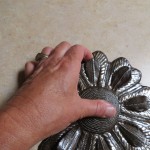 compact, takes up less bulk and all of that good stuff.
compact, takes up less bulk and all of that good stuff.
However, when you go to hang that sculpture, you need to bend those petals out a little bit. Go ahead. Do it boldly, with grit and determination. You’ll see the difference immediately. It’s got more pizzazz, more life. It looks more like a daisy. The same is true of most of our winged sculptures, such as our birds, dragonflies, butterflies, and angels. A big clue on wings is if they are attached with a rivet. If so, go ahead and bend it out.
Of course I will tell you that bending is not limited to elements that are riveted. Case in point, the flower at the left. Some dragonflies don’t have rivets, but the wings look better bent out a little bit anyway. Same with some of our curly haired girls and masks. If you think your sculpture might look more lively that way, give it a try. (You can always bend it boldly back!)

